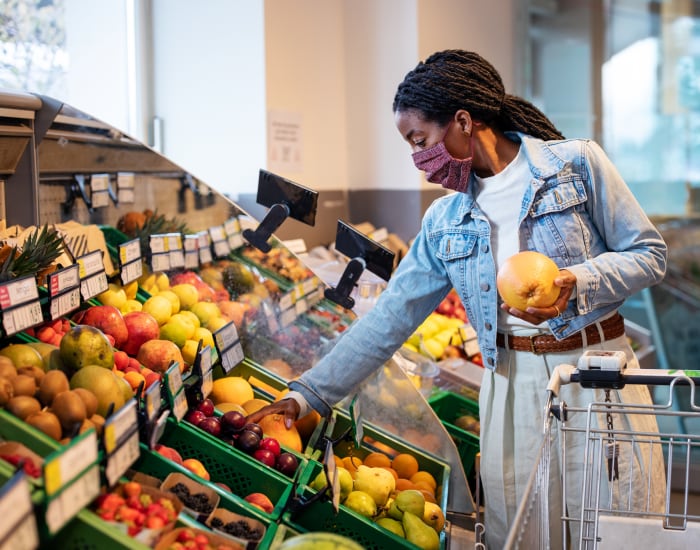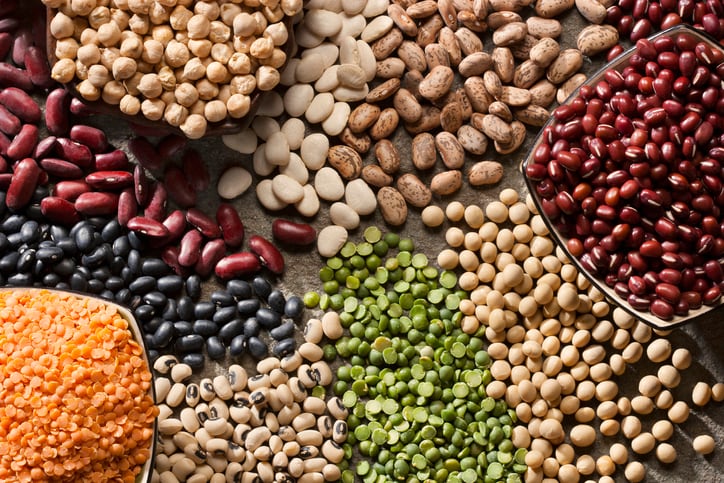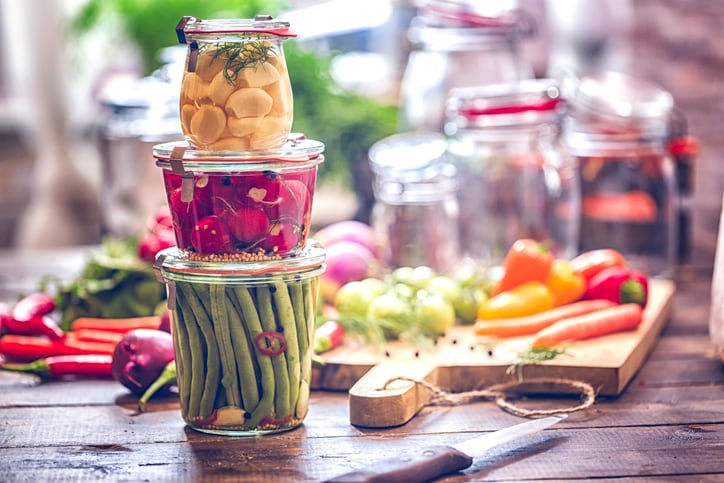Eurostat data reveals that 2017, around 1 in 4 Europeans (27%) ate fruit at least twice a day. A further 37% of the EU population ate fruit once a day and the remaining 36% ate fruit either less frequently or not at all during a typical week.
This suggests that most of us are failing to reach the five portions of fruit and veg that the WHO says we should be eating each day and every day.
Numerous WHO reports and strategies have recommended increasing population-level fruit and vegetable consumption to promote health. And the health benefits are significant.
Fruit and vegetables are good sources of essential vitamins and minerals, as well as dietary fibre that helps promotes gut health. The UK’s NHS notes that consumption can reduce the risk of heart disease, stroke and some types of cancer. Fruit and vegetables are also usually low in fat and calories, helping promote a balanced diet in the western world, where what we eat is often highly processed and laden with excess fat and added sugars.
By now, all of this is pretty common knowledge throughout much of Europe. The educational push around 5-a-day campaigns in public schools mean many of us are aware that at least some level of fruit and veg consumption is generally beneficial. But the fact remains, consumption is still low. The message isn’t getting through. Or, at least, it isn't changing how we eat.
“Facts about health and nutrition aren’t enough,” nutritionist Barbara Bray, Director of technical services and nutrition consultancy Alo Solutions, said today at an event organised by German life sciences multinational Bayer. “Facts are important to give people information, but that’s not what drives behaviour change.”
Barriers to consumption and the food environment
Bray stressed the importance of communication to support behavioural shifts across all areas of the food system. “If you get the communication right that can touch all parts of the food system… There are so many things hanging on consistent, food communication. It needs to be part of one wholistic solution so the message won’t be depleted."
According to the nutritionist’s assessment, a number of factors stand in the way of people getting more plants into their diets. These range from access and affordability, to how other people around them shop, the advertising they are exposed to, and what’s on the supermarket shelf in front of them. All these factors and more make up the food environment in which we exist.
Poverty is probably one of the greatest issues impacting how much produce we eat, she continued. “The poorest in society are only able to access the poorest nutrition. There is a clear link between fruit and vegetable consumption and income… If people don’t have enough income, how can they afford a healthy diet?”
Here Bray believes government intervention can play a pivotal role – not only through direct support schemes but also through taxation systems that incentivise employers to support their workforce through nutrition programs, as seen in some European countries. The importance of this - and the argument for policy action - should not be underplayed, she continued. "Its about saving lives. It's about staying strong and healthy into older adulthood."
Boosting the appeal of produce
Bray stressed that change is needed to support people adjust their behaviour and integrate more produce into their routines. We are, she stressed, essentially creatures of habit.
For Paul Mastronadi, President and CEO of Mastronadi Produce, supporting this shift boils down to making fruit and veg a food of choice for consumers. To this end, the produce grower has been working with seed varieties and agricultural practices to innovate around taste for elevated consumer appeal.
“We have been focusing on flavour to push up consumption,” he told the digital audience.
He also suggested there is further scope for innovation to address nutrient gaps and ensure fruit and vegetables are positioned at a price point more accessible to all.
“We are looking at seed varieties to increase yield and decrease price. We are also looking at technology. Labour has been an issue… The future is automation. The good news is it will bring costs down and bring higher paid jobs to the sector.
“We are also looking at [seed] variants for nutrients,” he continued.
However, current restrictions on what can be communicated in this regard mean it is impossible for companies like Mastronadi to market the benefits of such produce. This is another area where policy intervention could support industry innovation and ultimately boost consumption, the produce expert suggested.
Bray agreed that innovation has an important role to play in shaping consumption patterns, pointing to the rise of meal kit demand during the COVID pandemic and the future potential on offer from personalised nutrition solutions.
She believes the innovation response needs to be mindful of the changing consumption patterns witnessed across Europe in recent decades and the need to carve out spaces for fruit and veg within these emerging patterns. “We graze a lot. We don’t sit down and eat three meals a day… The food-to-go aisle doesn’t have a lot of fruit and veg in it,” Bray noted.
“In the West, we are always looking at how people can change with minimal impact on their lifestyle. Innovation is a great way… A lot of innovation will benefit the privileged few. [But] over time these things get integrated at a population [level].”
Does plant-based centre-plate protein innovation have a role to play?
For Bray, the plant-based processed food sector has a lot of issues to resolve before it can be seen as part of the solution.
"There has been a real debate around ultra processing and processed foods... Just because you can [process a food] does it mean you should? If we are constantly pushing people down the path of more plant-based food we need to make sure the nutrition is balanced."
Highlighting the importance of the amino acid profile of plant-based options used to replace meat, she noted 'we are at the start of this process'.
"More plant-based companies are looking to see how they can increase their nutritional profile. But many are starting from such a low base, if they just balanced their carbohydrates and fats - let alone amino acids - it would be an improvement."




